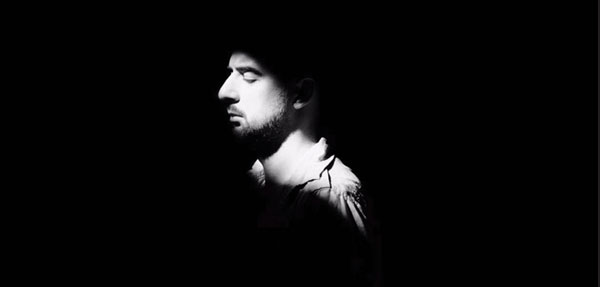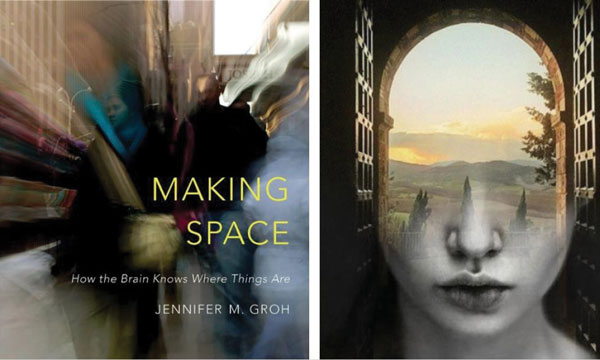This paper has been divided into two parts, the first part of which appears below. It describes how growing evidence and research on the multidisciplinary realm of illusions of nature is giving weight to a new field of Cognitive Biophilia and Neuroaesthetics.
In the last few years, neuroscientists have come to a remarkable conclusion: the quantity and quality of open space around us — whether it’s rows of cubicles in an open-floor matrix, four walls in a classroom with a view of the next building, or a windowless treatment area — are responsible for increasing the cognitive load on our analytical and affective faculties.
In other words, the nature of our thinking, whether it’s reflective, creative, emotional, rational or intuitive, is deeply influenced by our spatial environment. Space, it turns out, impacts higher cognitive functions in ways we’re just beginning to grasp.
Even more astonishing, because of the way our brains are wired when we’re relaxed, our sense of “self” incorporates and absorbs our immediate surroundings into an extended sense of self-called the “body schema,” referring to an integrated neural representation of the body.
Our cognitive experience of body becomes one with the place we’re in, which can, in turn, extend our sense of “self” into the environment at large. Because this neurobiology of sensory stimuli and cognitive perception gives rise to our sense of self and environment, such an extension of self is not a virtual simulation. It’s a shifting neural assessment of who we are. This insight also reveals the hitherto hidden dynamics that formulate our experience of self in space, based on contextual or structural cues embedded in the places we inhabit.
Neuroscientists refer to this fluid cognitive process as “embodied perception.” We spread out into our immediate surroundings, or recoil from them, by recalling and matching past spatial experiences that occurred under similar conditions. If our spatial memory in such spaces is pleasant, our sensory-motor cerebral regions incorporate these attributes as belonging to our body proper.
Architectural scholars such as Sarah Robinson have noted that our body schema is plastic, amenable to constant revision, and extends well beyond the envelope of the skin.1 In fact, researchers concede that the border separating the body schema, peripersonal space (the space immediately surrounding our bodies), and extrapersonal space (the space outside the reach of an individual) is indeed arbitrary.

In nature, our sense of self becomes boundless, which is deeply restorative. Unattributed, Pixabay

The border between self and place shifts based on sensory cues. Photo by Jonny Crow on Unsplash.
When nature is present in our environment, we can, and do, relax and become one with our immediate space. But when the environment is disconnected from nature, we become tense, anxious and feel distinctly disconnected from the world around us.
The far-reaching implications for how our brain perceives, interprets and modulates the environment have forced academics and practitioners alike to take a serious look at our prevailing assumptions about Biophilia and the application of biophilic design principles to architectural design.
Beyond Kinship — “I am nature”
Biophilia is defined as a love of or kinship with living systems. This definition presupposes an elemental separation between the observer and the object of observation, united by a complex and largely fragmented, cognitive process of observation. Yet, our high-level experience speaks of no such separation. In fact, elevated human experience has long been one of unity, a unity in which the individual and nature are experienced as synonymous.
Therefore am I still
A lover of the meadows and the woods, And mountains; and of all that we behold
From this green earth; of all the mighty world
Of eye and ear — both what they half create,
And what perceive; well pleased to recognise In nature and the language of the sense,
The anchor of my purest thoughts, the nurse, The guide, the guardian of my heart, and soul Of all my moral being
— William Wordsworth, Tintern Abbey (1798)
Shall I not have intelligence with the earth?
Am I not partly leaves and vegetable mound myself?
— Henry David Thoreau, Walden (1854)
Until now, these lyrical and deeply sincere confessions have often been interpreted as metaphor, the subjective experience, born of sensory and emotional phenomena, of a unique sensibility, exhorting our kinship with nature. Now, however, such eloquence can be understood, not as a subjective and embellished recollection, but as a multisensory, cognitive phenomenon, which is as real as the neural networks that gave rise to it.
What is life? It is the flash of a firefly in the night, It is the breath of the buffalo in the wintertime.
It is the little shadow which runs across the grass and loses itself in the sunset.
— Chief Crowfoot, Alberta, Canada (1830-1890)
The discovery of mirror mechanisms (MM) — a process that generates neural electrical activity in the brain whenever we initiate a motor action, or observe a similar motor action performed by someone else — has confirmed that observing the world is a complex, multisensory process. Researchers have discovered that specialized motor neurons encompass many more cerebral regions than just the visual brain proper. Italian scholars, Vittorio Gallese, a neuroscientist, and Alessandro Gattara, an architect, note that vision is remarkably multimodal, also incorporating motor, somatosensory and emotion-related brain networks.
In their contributing essay to the thought-provoking book, Mind in Architecture, edited by Sarah Robinson and Juhani Pallasmaa, Gallese and Gattara argue that five decades of research have shown that motor neurons — the nerve cells responsible for generating our body’s movement — also correspond to visual, tactile and auditory stimuli.
They note: “Any intentional relation we might entertain with the external world has an intrinsic pragmatic nature; hence it always bears a motor content. The same motor circuits that control the motor behaviour of individuals also map the space around them, thus defining and shaping in motor terms their representational content.”2

In other words, by design, our brain is an environmental simulation organ. Our brain models and emulates what we observe — whether it’s the undulating texture of a palm tree’s trunk or gravity’s pull on the body when we watch a rock climber inch toward a crevice on a vertiginous cliff. Our mind is a virtual reality chamber.
The same mirror mechanism that connects the frontal and posterior parietal cortex (the portion of the brain responsible for sensory integration) and its multimodal motor neurons (those neurons that incorporate various sensory inputs) are activated when we move through space or grasp objects in space. The same mechanisms are also stimulated when we observe the movement or actions of others. Our brain literally mirrors or performs the same motor actions we observe. As such, it’s more accurate to speak of cognitive perception not as an abstract function but as an action-oriented perception.
Given that all cognitive function is wired to mirror or embody what we perceive, what does this reveal about our relationship to space?
In her book, Making Space: How the Brain Knows Where Things Are, Jennifer Groh, a professor at the Department of Psychology and Neuroscience and the Department of Neurobiology at the Center for Cognitive Neuroscience at Duke University, notes that higher cognitive faculties, such as focused attention, memory and planning, share the neural infrastructure that our sensory and motor faculties use to navigate the shifting external environment. Therefore, these shared neural pathways are two-way circuits that can be tapped to recall past experiences formed under similar conditions.
Exposure to this emerging neural framework gives architects cause to reassess. Rather than rate the wellness or “suitability” of the built environment by the assorted attributes that we incorporate into buildings (function or object-driven design), architectural design should explore how to generate and sustain cognitive experiences within defined environments (subject-driven). How can we imbue our interior architecture — in hospitals, classrooms and workspaces — with an essential quality that the observer will experience as an extension of himself? That is, how can we create places that invite the mind and body to encompass their surroundings through interconnected space?
Even Stephen Kellert, who laid the foundation of biophilic design by identifying the attributes of nature that the built environment should include, was a vocal critic of the U.S. Green Building Council’s LEED certification system, where buildings achieve sustainability ratings based on a checklist of discrete interior features. In a 2014 interview with The New York Times, Dr. Kellert said: “Good design has an atomic quality. When things are organised in a coherent and integrated way, you get these emergent properties, so the whole is better than the sum of its parts.”
Considering that natural environments provide the ideal cognitive setting for our biology, largely because we automatically consider them cognitive extensions of our self, how can contemporary buildings come to elicit such a sublime experience: one where the whole is greater than the sum of its parts?
The cognitive properties of environmental context may hold the answer.
Spatial Cognition — the measure of time and self
Research in neuroscience has uncovered a fascinating connection between our ability to map space and the way we form memories. This connection between space and memory is a fundamental building block that gives rise to environmental context, which, in turn, regulates the signal strength of sensory input, particularly visual input.
This is why nature imagery staged in isolation on the walls results in two-dimensional décor that doesn’t alter the observer’s spatial assessment of interior space. On the other hand, biophilic “Open Sky CompositionsTM” — multisensory images set within a virtual skylight framework — do encompass additional structural and contextual cues. These multimodal cues engage a part of the brain that effectively alters the observer’s visceral assessment of interior space. This area of the brain is the cerebellum, typically involved in spatial cognition and depth perception.
Neural research has long confirmed that the strength of the visual cortex’s signals is context-dependent, a highly flexible and dynamic process. According to neuroscientists Stephen L. Macknik and Susana Martinez-Conde, authors of the book Sleights of Mind, the intensity of visual signals is fluid, malleable, and highly responsive to contextual cues.5 In other words, the environmental context in which sensory input takes place, shapes our perception of the input.
We already know that 50% of our neural tissue is directly or indirectly related to vision, revealing that our psychophysiological relationship to visual space is of far-reaching consequence. Humans’ cognitive representation of “space” is deeply embedded in our minds. Indeed, Dr. Jennifer Groh notes that the shared neural pathways in our brain that give rise to abstract thought, spatial cognition, and the way we map our sense of space, may also be responsible for the nature of human thought itself.

Our memory is a living repository of spatial maps. Photo by Alejandro Alvarez on Unsplash

Making Space book cover © 2014 Belknap Press © 2015 Antonio Mora
Far from philosophy or metaphysics, Dr. Groh’s scientific assessment of the interconnected nature of our neural networks reflects the plasticity inherent in the neurobiology of cognitive perception. Its implications for architectural design are vast — ranging from how enclosed interiors dampen cognitive restoration and emotional balance to how staging the proper spatial reference frames in windowless spaces can give rise to salutogenic perceived open space, thereby advancing the use of more therapeutic design principles in the built environment.
This observation is also echoed by environmental psychologists such as DeLong and Lubar, who have long suggested that humans perceive a strong relationship between the space that surrounds them and the passage of time. In their research, it has been shown that larger spaces slow down perceived time while smaller spaces speed it up.7
This insight echoes the scale proportions found in views to nature that offer prospect and refuge, where the observer enjoys unimpeded visual and spatial access from a small, safe spot such as a balcony, a secluded outlook, or a room overlooking a panorama.

Furthermore, a breathtaking view to nature is not only a poetic way of describing the swing of awareness that humans find intrinsically enticing and healing. It also aptly describes the physiological transformation that occurs during biophilic engagement. When the breath slows down or is momentarily suspended, it’s the direct result of the quieting of the mind and reflects an experience of the deep connection between the observer and the observed. This visceral recognition and conscious amazement are further evidence of the innate kinship between living systems, humankind and nature, defined by Biophilia.
When we perceive a small relative scale (our body) in the context of a much larger relative scale (environment or geography), we recalibrate our sense of self, which creates an experience of expansion and wholeness — a perceptual experience conducive to contemplation, mental clarity, emotional balance and relaxation.
When we experience vastness, time appears to slow down. Time becomes abundant and feels infinite. In this experience of infinity, the mind finds much more than solace; it discovers its own unrestricted nature as the filtering process of observation itself dissolves, revealing the observer’s “body schema” as both “self” and “environment.”
On the other hand, smaller spaces, particularly enclosed artificial spaces, tend to crowd us. Our perceived sense of time speeds up, leading to the common experience of time pressure, task-related stress and anxiety. As a matter of fact, small, enclosed spaces make occupants feel like the walls are closing in, which might be understood as an accurate expression of their cognitive perception.
Furthermore, a body of research indicates that space-time interactions in human vision are asymmetrical. Spatial cognition has a larger effect on temporal cognition than the other way around (Merritt et al., 2010 as cited in Homma and Ashida, 2015).8
This is the end of part 1. The remainder of this paper will be printed in the next edition of REFLEXION.
References (Continued in Part 2)
1 Robinson, Sarah (2015). Nestled Bodies. In Robinson, S and Pallasmaa, J (eds.), Mind in Architecture. Ch. 7, p139.
2 Gallese, V., and Alessandro Gattara (2015). Embodied Simulation, Aesthetics, and Architecture: An Experimental Aesthetic Approach. In Robinson, S and Pallasmaa, J (eds.), Mind in Architecture. Ch. 9, p164.
3 Groh, J (2014). Making Space, How the Brain Knows Where Things Are. Cambridge, Massachusetts, The Belknap Press of Harvard University Press. Ch. 9, p189.
4 Murphy, Kate (2014). Stephen Kellert. The New York Times. Retrieved Oct. 31, 2017, from https://www.nytimes.com/2014/01/05/opinion/sunday/stephen-kellert.html
5 Macknik, SL and Martinez-Conde, S. (2011). Sleights of Mind. New York, Henry Holt & Company.
6 Groh, J (2014). Making Space, How the Brain Knows Where Things Are. Cambridge, Massachusetts, The Belknap Press of Harvard University Press. Ch. 9, p190; p196.
7 DeLong, AJ and Lubar, JF. (1979). ‘Effect of environmental scale of subjects on spectral EEG output.’ Society for Neuroscience Abstracts 5:203. In Kellert, S, Heerwagen, J and Mador, M (eds). (2008). Biophilic Design: The Theory, Science and Practice of Bringing Buildings to Life. Wiley & Sons, NJ.
8 Merritt, DJ, Cassanto, D and Brannon, EM. (2010). Do monkeys think in metaphors? Representations of space and time in monkeys and humans. Cognition 117; 191-202. Retrieved Dec. 8, 2015, from http://www.ncbi.nlm.nih.gov/pmc/articles/PMC2952654/
Authors
David A. Navarrete is the director of research initiatives and accredited education at Sky Factory. He’s a member of The Center for Education (ACE) at the Academy of Neuroscience for Architecture (ANFA) and a fellow at The Centre for Conscious Design. He and Bill have co-authored articles on Cognitive Biophilia to diverse publications, including Conscious Cities Journal and Conscious Cities Anthology (2018, 2020), Radiology Today, Salus Global Journal, and Work/Design magazine.
Bill Witherspoon is the founder and Chief Designer at Sky Factory, Inc. Sky Factory’s published, peer-reviewed research has earned multiple awards, including the International Academy of Design & Health, Planetree International, and the Environmental Design Research Association (EDRA).






